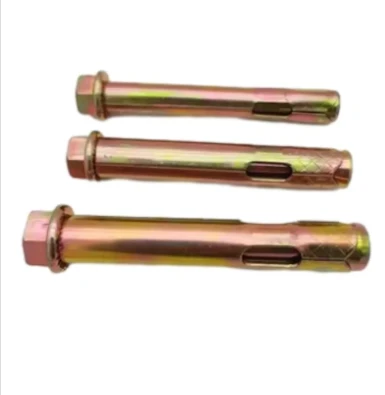11월 . 10, 2024 15:42 Back to list
Understanding M8 Nut Dimensions in Millimeters for Various Applications
Understanding M8 Nut Size in Millimeters
In the world of fasteners and mechanical components, understanding specifications is crucial. Among the various types of nuts, the M8 nut stands out due to its versatility and widespread use across industries. In this article, we'll delve into the details of the M8 nut size measured in millimeters, exploring its dimensions, specifications, applications, and why it's favored in various settings.
What is an M8 Nut?
The M in M8 indicates that this nut is part of the metric screw thread system, specifically referring to a metric thread size. The 8 denotes the nominal diameter of the screw thread in millimeters, which means the outer diameter of the nut is typically around 8 mm. M8 nuts are often used in tandem with M8 bolts or screws, ensuring that they fit snugly and securely.
Dimensions of an M8 Nut
Understanding the precise measurements of an M8 nut is essential for both users and manufacturers. The standard dimensions for an M8 nut include
- Nominal Diameter 8 mm - Thread Pitch Generally, the thread pitch for an M8 nut is 1.25 mm. This indicates the distance from one thread to the next and is a critical factor in matching the nut with the correct bolt. - Height (Thickness) The height of a standard M8 hex nut is approximately 6.4 mm. However, variations exist depending on the specific design and type of the nut (e.g., regular nut vs. locking nut). - Width Across Flats The width across the flats (WAF) for a standard M8 nut is about 13 mm. This measurement is essential for selecting the appropriate wrench or socket for tightening tasks. - Width Across Corners This is usually slightly larger than the width across flats, helping to determine how the nut will fit in tight spaces.
Types of M8 Nuts
m8 nut size in mm

There are several variations of M8 nuts, each designed for specific applications
1. Standard Hex Nuts The most common type, used for general fastening purposes. 2. Lock Nuts (Nyloc Nuts) These have a nylon insert that prevents loosening due to vibration, making them ideal for applications subject to movement. 3. Wing Nuts These have large wings on either side, allowing for easier manual tightening without tools. 4. Flange Nuts Integrated with a flange, these nuts distribute the load and provide more stability, often used in automotive applications.
Applications of M8 Nuts
M8 nuts are prevalent in various sectors due to their robust design and reliability. They are often found in
- Automotive Used in engine assemblies, chassis, and more. - Construction Essential in connecting structural components and fixtures. - Electronics Used to secure components within devices and machinery. - Furniture Assembly Notably in flat-pack furniture, where they facilitate secure fastening without the need for extensive tools.
Conclusion
When selecting fasteners for your projects, understanding specifications like the M8 nut size in millimeters is vital. The M8 nut is not only practical but also offers a blend of strength, durability, and versatility across a multitude of applications. Whether you're working on automotive repairs, construction projects, or assembling furniture, knowing the ins and outs of M8 nuts can lead to better assembly and longevity. In essence, these seemingly simple components play a crucial role in the integrity of structures and devices we use in our daily lives.
-
The Ubiquitous Reach of DIN934 in Application Realms
NewsMay.16,2025
-
Exploring Different Bolt Types
NewsMay.16,2025
-
Cracking the Code of Sleeve Anchor Mastery
NewsMay.16,2025
-
Clamp Design Principles,Types and Innovations
NewsMay.16,2025
-
Artistry Inspired by the Humble Anchor Bolt
NewsMay.16,2025
-
A Deep Dive into Screw Types
NewsMay.16,2025


